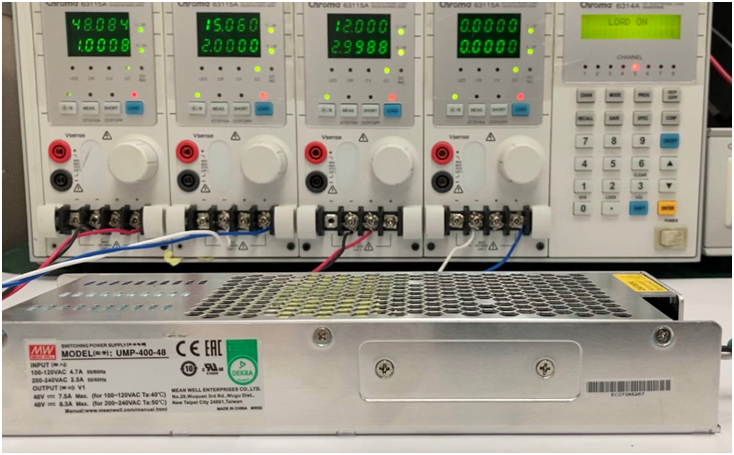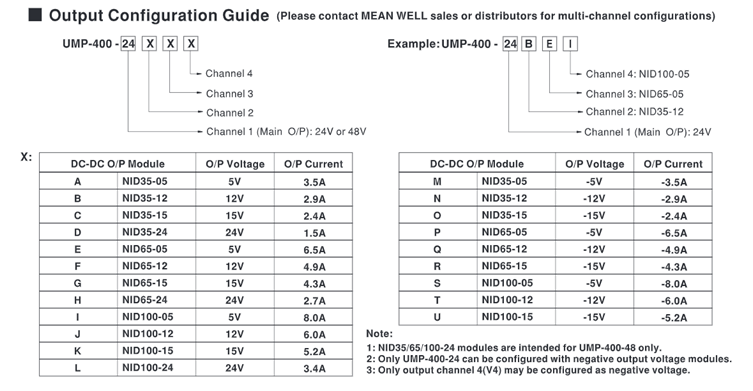High Precision Configurable Power Supply : UMP-400 Series
By: Zhendong Wang /Customer Service Dept.
wangzd@meanwell.cc
Recently, the electronics industry has developed rapidly, launching various types of electronic devices with diverse functions. However, the trend that the design of the devices focuses on miniaturization and high-precision becomes prevalent and inevitable. The criteria of power supply, the heart of the equipment, are especially critical in volume and output precision aspects. Because of the poor voltage accuracy of traditional multi-output power supply and harsh environment conditions, users’ choices and applications regarding power supplies are troublesome.
Most users hope to choose a " convenient power supply”, the output voltage of each channel remaining perfectly accurate
as long as the change of input and output of the selected power supply does not exceed the rated parameter. However, most of the current multi-output power supplies are not satisfactory. In order to further explain the characteristics of the multi-output power supply, let’s start with the structure diagram of the multi-output power supply shown in Figure 1.

Fig. 1 Multi-output circuit diagram
From Figure 1, only the main circuit V1 formed closed-loop control, while other circuits such as V2 and V3 are not. Obviously, only V1 will possess a very high accuracy under closed-loop feedback control regardless of the changes in input and output. In other words, the accuracy of V1 only depends on the reference voltage and sampling rate. On the contract, for V2 and V3, the accuracy depends on the following aspects:
- The turn ratio of main transformer T1, such as Np1:Np2 or Np1:Np3.
- Load condition of auxiliary output
- Load condition of main output
According to the three aspects mentioned above, since the turn ratio of the main transformer was fixed, the rest of the factors affect the output voltage accuracy of the auxiliary circuit are the load condition of the main circuit and the auxiliary circuit. This voltage accuracy refers to the crossover regulation of the power supply. If the rate of crossover regulation is great, and the main output load is different, it may cause the output voltage of the auxiliary circuit to fluctuate. This situation is not suitable for applications where the accuracy of multiple output voltage requirements are high.
UMP-400 series, adopting modular design and consisting of a front-end input and output modules, is a 1U modular power supply newly launched by MEAN WELL. These output modules can be matched flexibly, and provide 5V/12V/15V/24V voltages to meet the different voltages and powers for the peripheral components of electronic equipment. With convection cooling design and up to400W output power, UMP-400 is suitable for typical applications such as 3D printers, ATM machines, and all kinds of industrial control or testing equipment applications. Also, fanless design makes it a perfect fit in laboratory environments that require low noise.
UMP-400 model consists of the design of a main power supply + DC-DC modules. One set of main output plus three sets of DC-DC channels, a total of four sets of the output voltage. Each output has its closed loop feedback control without interfering with each other. Each group can be loaded according to the requirement of the application without interference.
As shown in Figure 2, one UMP-400-48 is configured with one NID100-15, and one NID100-12, a total of 3 outputs.
From the test data in Table 1 below, the voltage accuracy of each group can reach within ±0.5%. It meets the voltage accuracy requirements for most electronic equipment. More selection combinations are shown in Figure 3 below.

| Outputs | Output Current | Voltage | Open circuit voltage | Voltage accuracy |
| 48V | 1A | 48.084V | 48.120V | 0.08% |
| 15V | 2A | 15.060V | 15.100V | 0.26% |
| 12V | 3A | 12.000V | 12.020V | 0.16% |
Table 1. UMP-400-48KJ_ Test data

